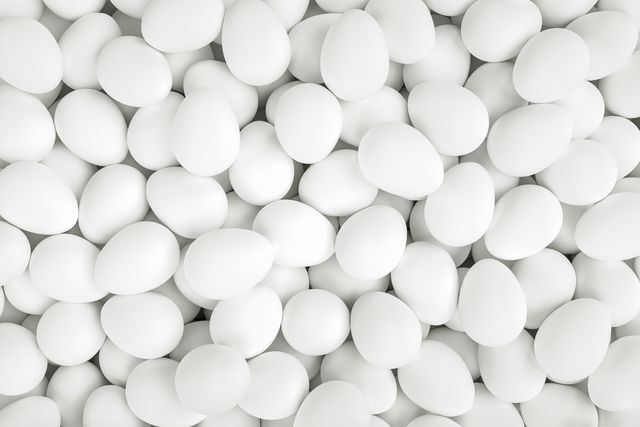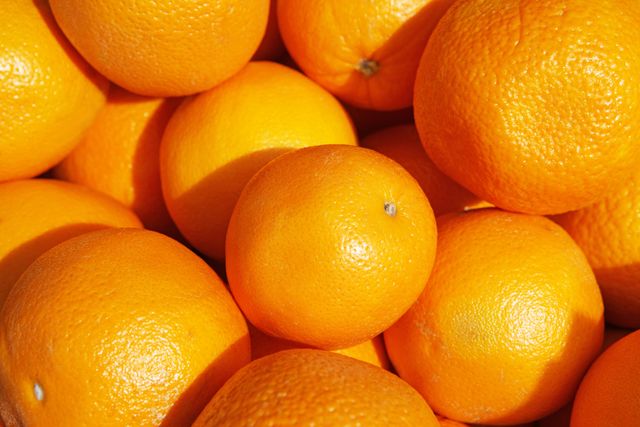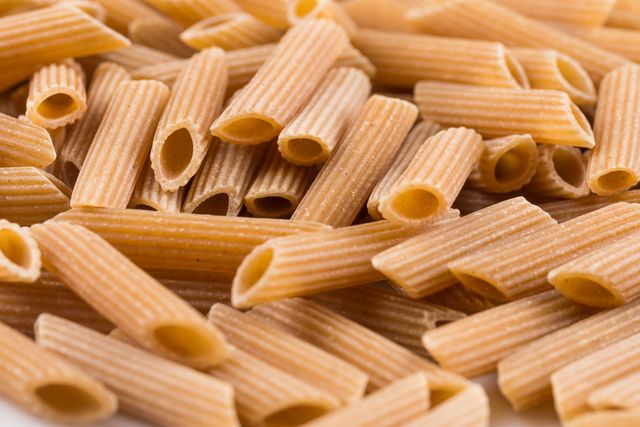Every day, we eat vitamins and minerals that are useful to keep our bodies running at full capacity. Well selected, these foods allow you to have more energy, boost your performance, improve your concentration and accelerate muscle recovery. It is therefore important to closely monitor what is happening on the plate.
Most supermarkets stock more than 30,000 items, yet every time we race up and down the aisles of the grocery store, we usually toss the same 10 to 15 foods into our carts. Which isn’t such a bad thing, as long as you’re taking home the right foods—ones that will keep you healthy, fuel peak performance and easily make up lots of delicious meals.
So before your next trip to the store, add the following 13 foods to your healthy grocery list. Then, when you get home, use our tips and recipes to easily get them into your diet and onto your menu.
1. Almonds
You should eat a small handful of almonds at least three to five times per week. Nuts, especially almonds, are an excellent source of vitamin E, an antioxidant that many runners fall short on because there are so few good food sources of it.

To incorporate almonds into your diet, add them and other nuts to salads or pasta dishes, use as a topping for casseroles, or throw them into your bowl of hot cereal for extra crunch. Combine with chopped dried fruit, soy nuts, and chocolate bits for a healthy and tasty trail mix.
2. Eggs
One egg fulfills about 10 percent of your daily protein needs. Egg protein is the most complete food protein short of human breast milk, which means the protein in eggs contains all the crucial amino acids your hard-working muscles need to promote recovery.

Whether boiled, scrambled, poached, or fried (in a nonstick skillet to cut down on the need for additional fats), eggs are great anytime. Use them as the base for skillet meals such as frittatas. Or include them in sandwiches, burritos, or wraps as you would meat fillers. You can also add them to casseroles and soups by cracking one or two in during the last minute of cooking.
Related article: The Best Solutions To Help Prevent Sleep Problems And Aid A Better Sleep
3. Sweet Potatoes
Just a single 100-calorie sweet potato supplies more than 250 percent of the DV for vitamin A in the form of beta-carotene, a powerful antioxidant. Sweet potatoes are also a good source of vitamin C, potassium, iron, and the two trace minerals manganese and copper.

Sweet potatoes can be baked, boiled, or microwaved. You can fill them with bean chili, low-fat cheese, and your favorite toppings, or you can incorporate them into stews and soups. Baked as wedges or disks, sweet potatoes make delicious oven fries.
4. Whole-Grain Cereal With Protein
While cereals in general get a bad rap, not all cereals are created equal. Skip cereals made of refined grains and packed with sugar. Instead, look for whole-grain cereals that offer at least five grams of fiber and at least eight grams of protein. 
Of course whole-grain cereal is excellent for breakfast—a meal you don’t want to skip since research indicates that those who eat breakfast are healthier, trimmer, and can manage their weight better than non-breakfast eaters.
Cereal also makes a great postrun recovery meal with its mix of carbohydrates and protein. Or you can sprinkle whole-grain cereal on top of yogurt, use it to add crunch to casseroles, or tote it along in a zip bag for a snack.
Related article: 10 Foods That Contains Highest Amount Of Protein To Add To Your Muscle Gaining Diet
5. Oranges
Oranges supply over 100 percent of the DV for the antioxidant vitamin C, taking vitamin C supplements for two weeks prior to challenging arm exercises help alleviate muscle soreness. This fruit’s antioxidant powers also come from the compound herperidin found in the thin orange-colored layer of the fruit’s skin (the zest).

Add orange sections to fruit and green salads, or use the orange juice and pulp for sauces to top chicken, pork, or fish. And to benefit from the antioxidant herperidin, use the orange zest in baking and cooking. Select firm, heavy oranges, and store them in the fridge for up to three weeks.
6. Canned Black Beans
One cup of these beauties provides 30 percent of the DV for protein, almost 60 percent of the DV for fiber (much of it as the cholesterol-lowering soluble type), and 60 percent of the DV for folate, a B vitamin that plays a key role in heart health and circulation.
Black beans also contain antioxidants, and researchers theorize that this fiber-folate-antioxidant trio is why a daily serving of beans appears to lower cholesterol levels and heart-disease risk. In addition, black beans and other legumes are low glycemic index (GI) foods, meaning the carbohydrate in them is released slowly into the body.

For a quick, hearty soup, open a can of black beans and pour into chicken or vegetable stock along with frozen mixed veggies and your favorite seasonings. Mash beans with salsa for an instant dip for cut veggies, or spread onto a whole-wheat tortilla for a great recovery meal. Add beans to cooked pasta or rice for extra fiber and protein.
Related article: 10 Great Stretches That Benefit You After a Lower-Body Workout
7. Mixed Salad Greens
Rather than selecting one type of lettuce for your salad, choose mixed greens, which typically offer five or more colorful delicate greens such as radicchio, butter leaf, curly endive, and mache. Each variety offers a unique blend of phytonutrients.

Toss together a mixed greens salad with tomato, cucumber, scallions, and an olive oil-based dressing (the fat from the oil helps your body absorb the phytonutrients). You can also stuff mixed greens in your sandwiches, wraps, and tacos.
Or place them in a heated skillet, toss lightly until wilted, and use as a bed for grilled salmon, chicken, or lean meat. Greens store best in a salad spinner or the crisper drawer in your fridge for up to six days. Just don’t drench them in water or they won’t keep as long.
8. Salmon
Nutrition-wise, salmon is the king of fish. Besides being an excellent source of high-quality protein (you get about 30 grams in a four-ounce serving), salmon is one of the best food sources of omega-3 fats.

Bake, grill, or poach salmon with fresh herbs and citrus zest. Gauge cooking time by allotting 10 minutes for every inch of fish (steaks or fillets). Salmon should flake when done. Precooked (leftover) or canned salmon is great in salads, tossed into pasta, stirred into soups, or on top of pizza.
Related article: 6 Simple Tricks To Keep Your Diet On Track And Achieve Your Goals
9. Whole-Grain Bread
Athletes need at least three to six one-ounce servings of whole grains per day, and eating 100 percent whole-grain bread (as opposed to just whole-grain bread, which may contain some refined grains and flours) is an easy way to meet this requirement since one slice equals one serving.

Bread is versatile, portable, and ready to eat right out of the wrapper. Spread with peanut butter or stuff with your favorite sandwich fillings and plenty of sliced veggies for a one-handed recovery meal. Coat with a beaten egg for French toast, or use as layers or crumbled in a casserole.
10. Frozen Stir-Fry Vegetables
Eating a combination of antioxidants, such as beta-carotene and vitamin C, may lessen muscle soreness after hard interval workouts by reducing the inflammation caused by free-radical damage. Most ready-to-use stir-fry veggie combos offer a potent mix of antioxidants by including red and yellow peppers, onions, bok choy, and soy beans.

Dump the frozen vegetables right into a hot wok or skillet, add tofu, seafood, or meat, your favorite stir-fry sauce, and serve over brown rice. Or throw them into pasta water during the last few minutes of cooking, drain, and toss with a touch of olive oil.
Related article: The Best 20-Minute 8 Exercise Bodyweight Workout for Weight Loss
11. Whole-Grain Pasta
Pasta contains easily digestible carbs that help you restock spent glycogen (energy) stores. Whole-grain versions are a must over refined pastas because they contain more fiber to fill you up, additional B vitamins that are crucial to energy metabolism, and disease-fighting compounds such as lignans.

Pasta makes a complete one-pot meal—perfect for busy runners—when tossed with veggies, lean meat, seafood, or tofu. Or combine pasta with a light sauce, a bit of your favorite cheese, and turn it into a satisfying casserole.
12. Chicken
Athletes need about 50 to 75 percent more protein than nonrunners to help rebuild muscles and promote recovery after tough workouts. And just one four-ounce serving of chicken can supply about half a runner’s daily protein needs.
Along with protein, chicken contains selenium, a trace element that helps protect muscles from the free-radical damage that can occur during exercise, and niacin, a B vitamin that helps regulate fat burning during a run. 
Chicken’s versatility makes it perfect for runners with little time to cook. You can bake, broil, grill, or poach chicken in broth. Leftover chicken works well on top of salads, mixed into pasta, or stuffed into sandwiches and burritos. Fresh chicken stores safely for two days in the fridge, but can be frozen for six months or more.
Related article: 10 Foods That Contains Highest Amount Of Protein To Add To Your Muscle Gaining Diet
13. Frozen Mixed Berries
The colorful compounds that make blueberries blue, blackberries deep purple, and raspberries a rich shade of red are called anthocyanins—a powerful group of antioxidants . Anthocyanins may also assist with postrun recovery and muscle repair.
Not bad for a fruit group that contains a mere 60 calories or so per cup. And remember: Frozen berries are just as nutritious as fresh ones, but they keep far longer (up to nine months in the freezer), making it easier to always have them ready to eat.

Frozen berries make a great base for a smoothie and there’s no need to thaw them. Once thawed, eat them straight up or add to some vanilla yogurt with chopped nuts. Or liven up your hot or cold cereal with a big handful. You can also bake berries with a nutty topping of oatmeal, honey, and chopped almonds for a sweet treat after a long weekend run.

